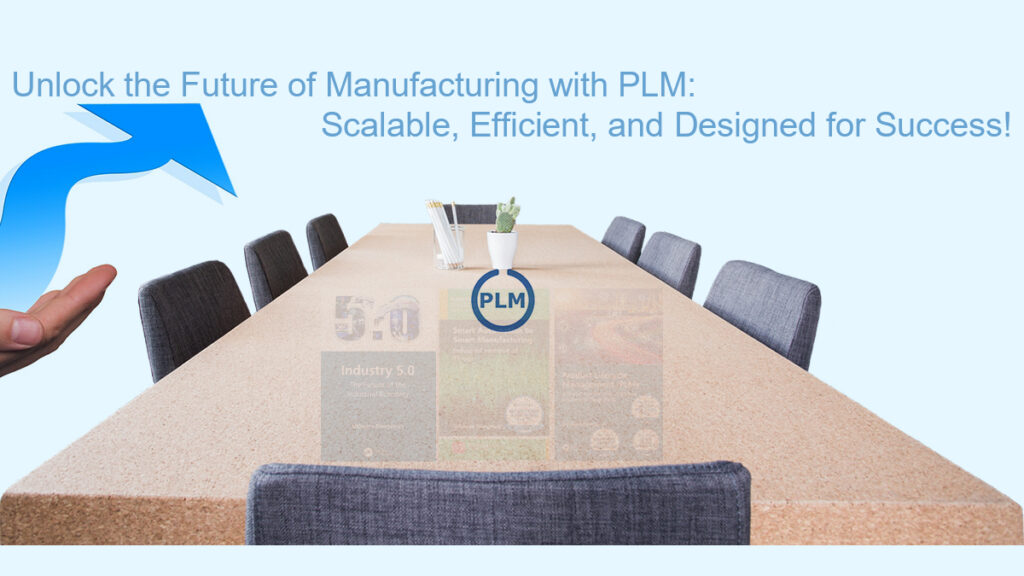
Debunking common myths about PLM reveals its true potential. Learn about PLM myths and benefits for manufacturers of all sizes, enhancing efficiency, collaboration, and innovation.
Introduction
Product Lifecycle Management (PLM) is a transformative tool for manufacturers, yet several myths persist that prevent its full potential from being realized. As a PLM Consultant at Neelsmartec, I aim to clear up these misconceptions and provide a clear, human-centered perspective on how PLM can revolutionize your manufacturing processes.
Myth 1: PLM is Only for Large Enterprises
Reality: PLM is scalable and beneficial for businesses of all sizes.
Mitigation: Modern PLM solutions are designed to be flexible, allowing small and medium-sized enterprises (SMEs) to implement them effectively. PLM comes in various deployment models such as on-premises (Windchill PLM) and cloud-based (OpenBOM) solutions, making it accessible to any size business. For example, a small manufacturer might start with a cloud-based PLM to reduce upfront costs and scale as they grow. Conversely, a larger enterprise might opt for an on-premises solution to fully customize the system to their specific needs.
Myth 2: PLM is Too Expensive
Reality: The initial investment in PLM often results in significant long-term savings.
Mitigation: Consider PLM as a strategic investment rather than a cost. It enhances collaboration, reduces errors, speeds up product development, and improves overall efficiency, leading to substantial cost savings. Many PLM providers offer flexible pricing models, including subscription-based plans for cloud solutions, making it more accessible and aligning costs with value received. For example, a medium-sized enterprise can benefit from a cloud-based subscription model, avoiding the hefty upfront costs of hardware and software associated with on-premises solutions.
Myth 3: PLM is Only About Managing CAD Files
Reality: PLM encompasses much more than just CAD management.
Mitigation: While managing CAD files is a component, PLM integrates data across all stages of the product lifecycle—from conception and design to production, service, and disposal. It unifies various departments, streamlines processes, and ensures that everyone has access to the latest information, thereby fostering innovation and reducing time-to-market. For example, a global automotive manufacturer uses PLM to coordinate between design, engineering, and production teams spread across different continents, ensuring seamless collaboration and efficiency.
Myth 4: PLM Implementation is Disruptive
Reality: Properly managed PLM implementation minimizes disruption.
Mitigation: A phased implementation approach helps in mitigating disruptions. By prioritizing critical areas and gradually rolling out the system, you can manage the change effectively. Additionally, comprehensive training and support ensure that your team adapts smoothly. The initial effort is outweighed by the long-term benefits of streamlined operations and improved productivity. For instance, a medium-sized electronics manufacturer might begin with implementing PLM in their design department and expand to other departments over time, reducing the impact on day-to-day operations.
Myth 5: PLM is Only for Engineers
Reality: PLM is a cross-functional tool benefiting multiple departments.
Mitigation: PLM integrates various functions such as marketing, sales, procurement, and customer service, not just engineering. By providing a single source of truth, it improves collaboration across departments, enhances decision-making, and drives overall business performance. Engaging stakeholders from different functions during the implementation phase ensures that the system meets the diverse needs of your organization. For example, a consumer goods company uses PLM to align their marketing campaigns with product development schedules, ensuring timely and coordinated product launches.
Myth 6: PLM Systems are Too Complex
Reality: Modern PLM systems are user-friendly and intuitive.
Mitigation: Today’s PLM solutions are designed with the end-user in mind, featuring intuitive interfaces and user-friendly functionalities. Vendors provide comprehensive training and continuous support to help users get the most out of the system. Customizable dashboards and role-based access further simplify the user experience, ensuring that the right information is available to the right people at the right time. For instance, a large aerospace manufacturer uses a sophisticated yet user-friendly PLM system to manage complex product data and ensure compliance with stringent regulatory requirements.
Conclusion
Debunking these myths reveals that PLM is a powerful, versatile tool that can drive efficiency, innovation, and growth for manufacturers of all sizes. By understanding the true capabilities and benefits of PLM, manufacturers can make informed decisions and fully leverage this technology to stay competitive in an ever-evolving market. At Neelsmartec, we are committed to guiding you through every step of your PLM journey, ensuring a smooth transition and long-term success.
To know more about PLM in conjunction with IIoT, don’t miss our award-winning publication, “Product Lifecycle Management (PLM): A Digital Journey Using Industrial Internet of Things (IIoT).” Explore the intersection of PLM and IIoT for enhanced manufacturing processes and innovation.
Embracing PLM with the right mindset and support can transform your manufacturing operations. Don’t let myths hold you back from achieving operational excellence and staying ahead in the industry.

